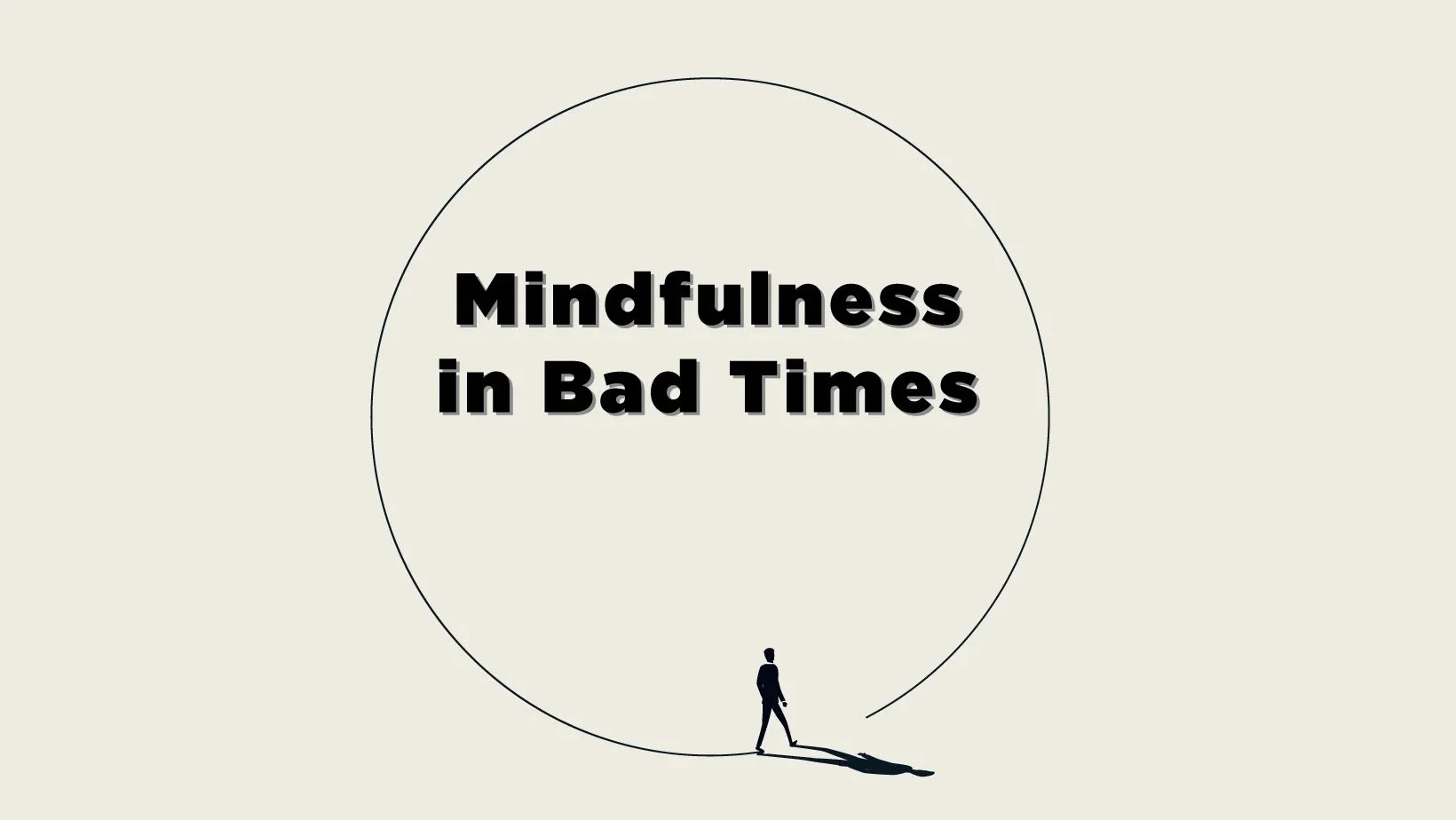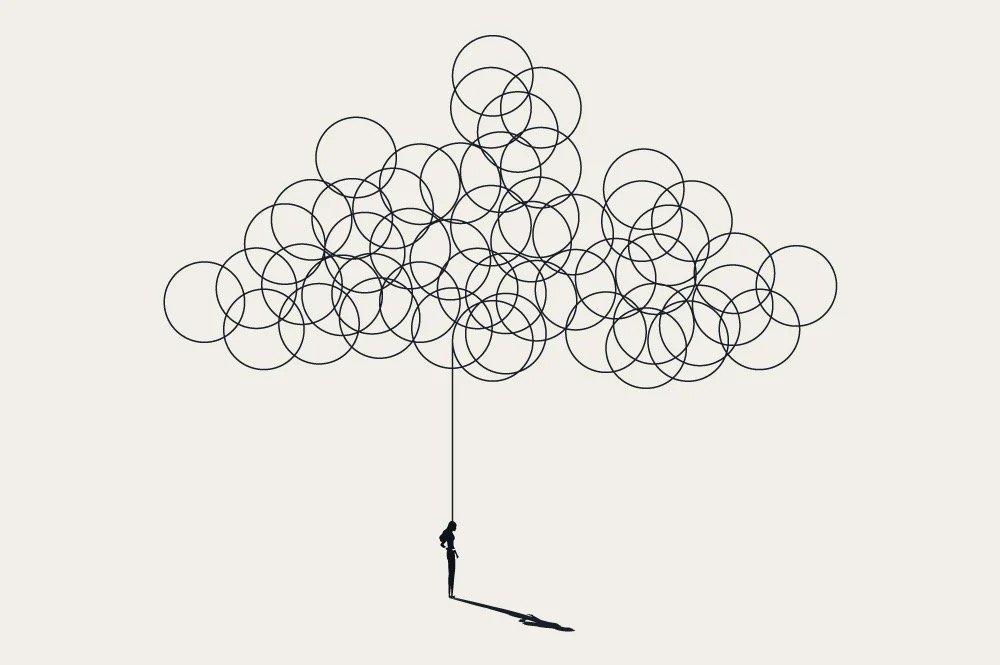Mindfulness in Bad Times
We often marvel at the complex, highly evolved nature of the human body, but here’s something I’d like to send back to the lab for some revisions — the location of the sinuses.
I’d like to speak to the manager about this arrangement!
The face has a series of air pockets that allow the nose to drain mucus and keep the airway free. These are your sinuses. That’s great, but who decided to put the lower of these sinuses just millimeters away from the deep roots of the upper molars!? Due to their close proximity, when a sinus is swollen and inflamed from an infection, it has the tendency to press against the roots of the top teeth and give a person the sensation of a terrible toothache.
The person in this instance is me, and for my entire life, every year or two I manage to get a nasty sinus infection. And with the infection, like a putrid poison cherry on top, I get a toothache in my upper left molars. As I write this, I’m feeling the steady throb of pain, like someone periodically applying varying amounts of sharp pressure on my teeth, with a flathead screwdriver, from the inside of my skull.
Whenever I get my annual sinus toothache, I think about what a zen teacher once said to me.
“No one ever appreciates the joy of a not-toothache. Today, can you be mindful of how wonderful it is to have a not-toothache?”
Despite my annual sinus-toothache issue, I sadly am not very thankful for the joy of toothache-lessness. The only time I remember is when the toothache comes back to visit.
The toothache provides an interesting question about the place of mindfulness.
If you do an image search of the word “mindfulness,” you’ll see photo after photo of happy people sitting cross-legged on mountains and beaches with blissful smiles on their faces. Perhaps they’re smelling a flower, or holding a cup of tea, or simply savoring the wind in their hair.
A real image search result for the word "mindfulness."
These images show how mindfulness has become a mainstream wellness trope, meaning something akin to “appreciate and take joy in the good parts of life.”
You don’t see any photos of people being mindful of their toothache.
And yet mindfulness at its core has no preference for “good” or “bad” things happening to you. It simply means to be aware of the present moment as it unfolds, without putting a veil of thoughts, judgements, desires, or objections between you and reality.
When bad things happen to us, we feel an instinct to hide from them, push them away, or try to ignore them until the situation improves. Mindfulness is the opposite of all that. It invites you to dive into your negative experience and really be there for it. Surprisingly, this approach actually makes things better.
For example, let’s say you’re dealing with a toothache. Your face is scrunched up in pain and your brain is casting about for some relief. Your mind is throwing up a lot of chaff: about how unfair this is, about the nature of the pain, and about how grateful you’d be for it all to end.
The mind is exceptionally good at spinning out thought after thought, hiding the present moment in a cloud of chatter and commentary.
You could stay in this mental storm and suffer, or you take a few deep breaths, let all those chattering thoughts drop away, and just sit with the toothache for a while, without commentary, without complaint, without an “angle.”
If you do this successfully, something special happens. The tooth still hurts just as much, but you’ve stopped taking it so personally. It’s just a sensation caused by the firing of some nerves in your jaw. You don’t have to invest this sensation with so much drama and emotional strife. And you realize that this moment, like all the moments before, will end soon enough. You’re going to be okay.
Just a minute of mindfulness during an unpleasant experience helps the brain stop clenching so tightly to the emotional drama of your plight. You find you can be in pain, but not be in misery. Give it a try the next time something bad happens to you!
What’s really fascinating is that mindfulness works in the same way during all those positive, sitting on a beautiful beach, stock photography moments discussed above.
Let’s imagine you’ve found yourself in one of these special moments. You’re looking at a beautiful ocean view, the weather is perfect, your mood is just right. If you’re not being mindful, you’ll find there’s a lot of commentary happening about this happy occasion. Your brain will be chattering away, hatching schemes about how to prolong the good times or how to create circumstances that bring them back soon. There might also be a subtle undercurrent of sadness and fear — that this moment will end, and that maybe things will never be this good again.
But if you stop, take some deep breaths, and enter the mindful state, you’ll find happy moments become something altogether different. You’re truly there. Instead of a trite layer of commentary (“the waves are as pretty as a picture”), you actually see the way light glistens off the water, taste the salt in the air, and feel the grains of sand between your toes. But just as with a negative experience, you have the sense that all of this will pass. Not in a sad, cling-to-it-for-dear-life way, but in a “Wow, I am a part of this universe and this moment is all I really have” kind of way.
With mindfulness, both the toothache and the idyllic beach are of equal value.
They are where you are, in that moment.
You could smother these moments in thick layers of judgment and preference, but all that will do is exacerbate the misery and blunt the joy of life.
The present is always a more authentic place to be, no matter how miserable or happy your brain thinks that place is. Good times will come. Bad times will come. As a human being, you’re going to have plenty of both. Through it all, remember that no matter how wound up your mind gets, reality is just a few deep breaths away.





